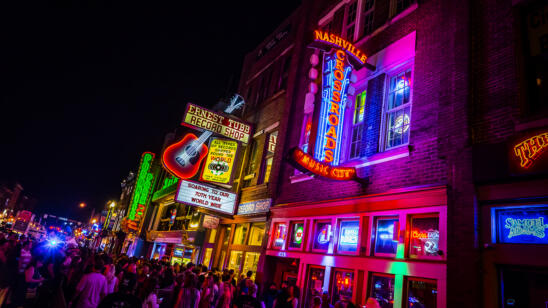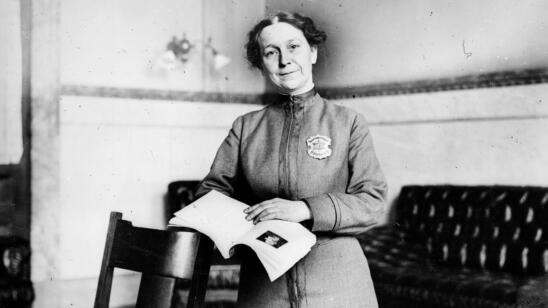Warning: The following contains disturbing descriptions of violence. Reader discretion is advised.
Richard Rogers preyed on gay men in New York City during the 1980s and ’90s, dismembering them and leaving body parts in trash bags strewn alongside roads in three states. Yet as of this writing, he doesn’t warrant so much as a Wikipedia entry. Some attribute that to a trio of realities from the era in which he operated: the sexuality of his victims; the city’s out-of-control murder rate; and the then-peaking AIDS epidemic.
With Last Call: A True Story of Love, Lust, and Murder in Queer New York, author Elon Green sketches out the lives of five men brutalized by the Staten Island resident, a surgical nurse at New York’s Mt. Sinai Hospital when investigators finally caught him in 2001. Tried for two of the killings, Rogers, now 70, is serving consecutive life sentences at the New Jersey State Prison in Trenton.
Green tells A&E True Crime he set out not to paint a portrait of the killer, but to tell the stories of victims snuffed out as they were on the verge of living richer, fuller lives.
Last Call raises the longstanding question about whether the murder cases languished, unsolved, because the victims were gay. But it also introduces us to a dedicated detective who enlisted his own kids to distribute composite sketches of the killer around Manhattan. What was the reality?
I feel pretty comfortable saying the New York Police Department didn’t pay attention to it as much as they should have. However, the New Jersey State Police were very attentive. And the same is true for Rockland County… I should say that I went into the book assuming that one of the reasons the case wasn’t solved for so long was pure indifference and negligence because the victims were gay. That was my bias. And it turned out to not be true, for the most part.
[Stream episodes of The First 48 in the A&E app.]
Early in Last Call, you do a deep dive into the apathy of law enforcement in regard to bias crimes—well beyond the Rogers case. Why was that broader context important?
I felt that if the reader didn’t know what was going on at the time in New York, with the legal system, the judicial system, law enforcement…there would be no way to understand the bigger picture of why these cases were treated the way they were. You had to understand the stakes of what was going on around everybody: This was a time of tremendous, unmitigated violence. It made no sense to be writing about these murders as if they happened in a vacuum.
I knew I could tell the story of an overlooked generation [of gay men] who were just on the cusp of being able to live the lives they wanted. When I wrote the proposal for the book, I didn’t even have a chapter on Richard Rogers, such was my disinterest in him.
In 1973, in Maine, Rogers killed a grad school roommate, Fred Spencer, telling a sympathetic jury he’d found the man going through his possessions. A fight ensued. Over the years, writers have wondered if there was something more intimate behind the hostility. What’s your take?
There was very little reporting done on this case. The trial transcript didn’t survive. The one detective I found who worked on the case—and in fact who wrote out the search warrants—doesn’t remember anything about it at all. So I don’t know what set Richard off. But I can say with some certainty that it was not just “self-defense.” That’s bullsh*t.
Is Richard Rogers gay?
Yes. He’s said as much at trials.
There are four other men whom authorities believe Rogers butchered and killed between 1991 and 1993. Tell us about them.
Peter Anderson had been a banker in Philadelphia. He was on his second marriage and he’d come to New York on business and favored piano bars. The second victim, Thomas Mulcahy, worked for a technology company in Massachusetts; he, too, was married, for a long time, to a woman named Margaret. He also would come to New York on business, tacking on an extra day before he went home, to go to the bars and clubs he liked.
By far, the least is known about the third victim, Anthony Marrero. He was born in Puerto Rico and grew up in the Philadelphia area. Eventually, after some fairly menial jobs, he became a sex worker… The last known victim was Michael Sakara, who was a typesetter at the New York Law Journal. Much like Anthony, he was not closeted, and until some months before his death had been in a long-term relationship. He met the murderer at the Five Oaks, a wonderful piano bar.
Margaret Mulcahy’s place in all this is heartbreaking. But it is it fair to say that she helped force authorities to jump-start the investigation?
Detectives told me that if Margaret hadn’t given them “a kick in the pants” after the case had been cold for some years, they probably would not have given it another look. Margaret had hired a private investigator to try to find out what happened to her husband. And she also called up the head of the first task force, Matthew Kuehn (of the New Jersey State Police) and demanded a meeting with him.
It says a great deal about her that she stuck with it because, quite frankly, not every family member was as attentive to these cases… This is what prompted [investigators] to think about other ways in, and to reach out to the Toronto Police Service about vacuum metal deposition (VMD).
[Editor’s note: VMD is a forensics technique for enhancing fingerprints, particularly partials found on plastic—such as the garbage bags Rogers used to dispose of body parts.]
How did VMD alter the direction of the investigation?
Kuehn and (another investigator) obtained the enhanced, but still unidentified fingerprints and made copies for crime labs in every state. One set was received by Kimberly Stevens, a young forensic scientist in Maine. Kim was incredibly motivated. But as I wrote in the book, she didn’t expect anything to come of this package in the mail. One of the things she told me is that databases like AFIS (the Automated Fingerprint Identification System, which provides potential fingerprint matches) are only as good as the prints that are already in the system. And quite frankly, the quality of the prints that are in AFIS are often pretty poor.
But…AFIS produced 30 potential matches from the prints that were lifted off the bags in Canada. Kim says that the hero of the story is not her—it’s the person who took Richard Rogers’ fingerprints in 1973, after his arrest for the Fred Spencer killing. Because if those hadn’t been beautiful prints—and they are, I’ve seen them—it wouldn’t have mattered that she had gotten the latents from Canada… She still works for the crime lab in Maine. Now she does ballistics.
In 1998, Rogers picked up a man, Joe Gallagher, drove him back to Staten Island and drugged him. Gallagher awoke to find Rogers’ hands around his neck, but somehow convinced Rogers to drive him to the ferry back to Manhattan. How did that unfold?
Rest in peace, Joe. I was lucky to do that interview, because he died of a heart attack not long after… Obviously, I don’t know for sure, but you could argue that one possibility is Joe had called his partner to tell him where he was.
By summer 2001, law enforcement was closing in on Rogers as the prime suspect. But his arrest was a mess. Myriad, multi-state agencies had worked out a weeklong surveillance plan to gather evidence. Then—boom—NYPD just swooped in and scooped him up, without letting the plan unfold. Why?
This is what I think happened, and it’s also informed by what detectives think happened: It was well known that Helen Giuliani (mother of the city’s then-mayor, Rudolph Giuliani) was at Mt. Sinai Hospital [where Rogers worked]. It had been reported in The New York Times. And once the NYPD got wind of the surveillance operation, what I think happened is that (then-police commissioner) Bernard Kerik, who was famously close to Giuliani, most likely just made the decision to pull Rogers out…even though it was preposterous to think that Helen Giuliani was in any kind of danger.
Rogers rejected your request to speak in person—but you were still able to report that he enjoys the roast beef from the prison kitchen. What else have you pieced together about his life today?
He seems to enjoy watching the news. He’s a frequent letter writer. He doesn’t seem at all unhappy. And he maintains his innocence.
Related Features:
‘Grindr Killer’ Stephen Port Hid in Plain Sight for Years
Robert Hansen, the ‘Butcher Baker’ Serial Killer Who Hunted His Victims Like Animals in the Wild
Elusive ‘Beauty Queen Killer’ Led Double Life as a Florida Playboy


